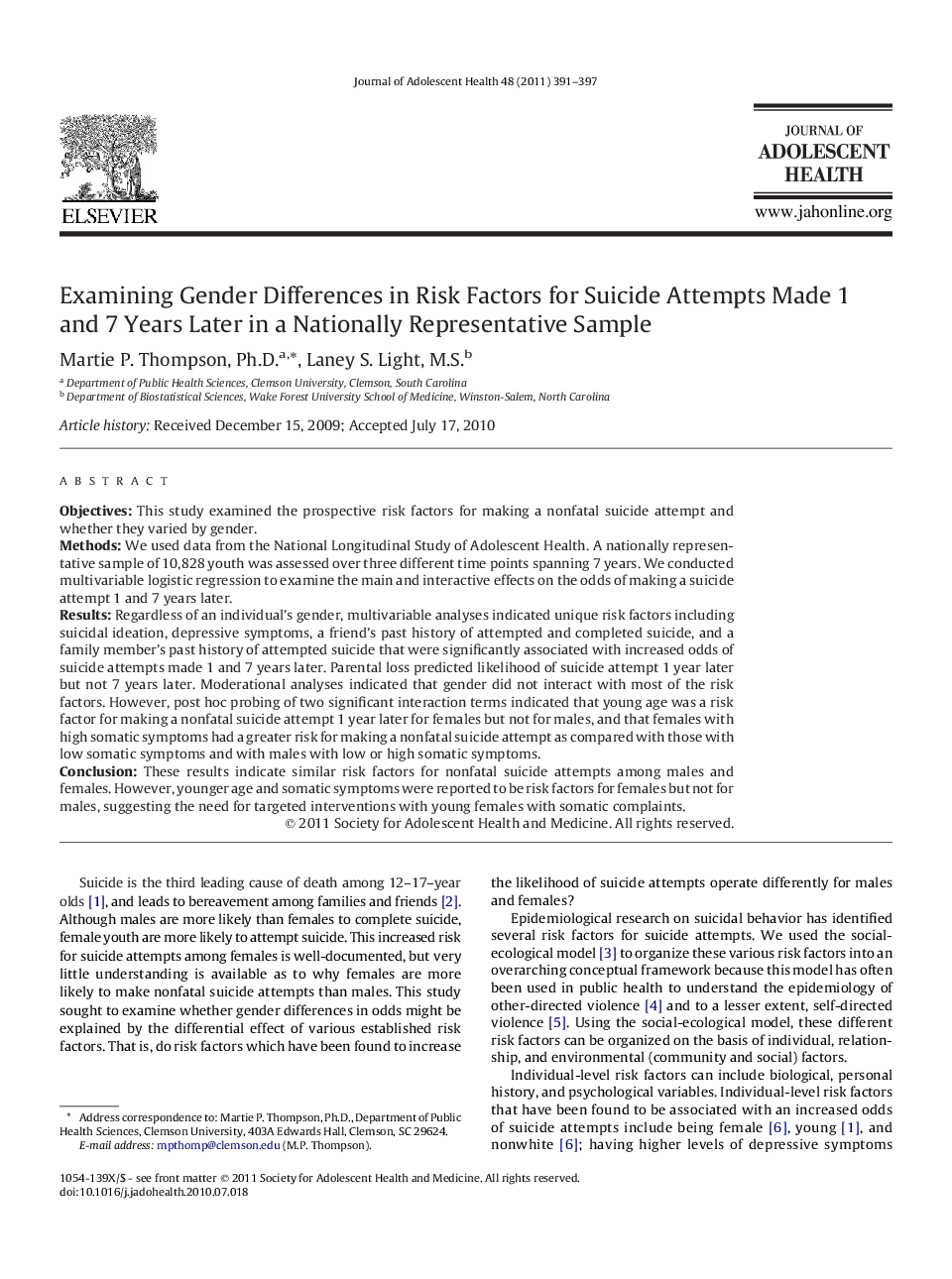| کد مقاله | کد نشریه | سال انتشار | مقاله انگلیسی | نسخه تمام متن |
|---|---|---|---|---|
| 1080078 | 950532 | 2011 | 7 صفحه PDF | دانلود رایگان |

ObjectivesThis study examined the prospective risk factors for making a nonfatal suicide attempt and whether they varied by gender.MethodsWe used data from the National Longitudinal Study of Adolescent Health. A nationally representative sample of 10,828 youth was assessed over three different time points spanning 7 years. We conducted multivariable logistic regression to examine the main and interactive effects on the odds of making a suicide attempt 1 and 7 years later.ResultsRegardless of an individual's gender, multivariable analyses indicated unique risk factors including suicidal ideation, depressive symptoms, a friend's past history of attempted and completed suicide, and a family member's past history of attempted suicide that were significantly associated with increased odds of suicide attempts made 1 and 7 years later. Parental loss predicted likelihood of suicide attempt 1 year later but not 7 years later. Moderational analyses indicated that gender did not interact with most of the risk factors. However, post hoc probing of two significant interaction terms indicated that young age was a risk factor for making a nonfatal suicide attempt 1 year later for females but not for males, and that females with high somatic symptoms had a greater risk for making a nonfatal suicide attempt as compared with those with low somatic symptoms and with males with low or high somatic symptoms.ConclusionThese results indicate similar risk factors for nonfatal suicide attempts among males and females. However, younger age and somatic symptoms were reported to be risk factors for females but not for males, suggesting the need for targeted interventions with young females with somatic complaints.
Journal: Journal of Adolescent Health - Volume 48, Issue 4, April 2011, Pages 391–397